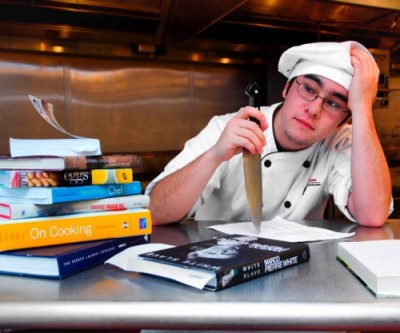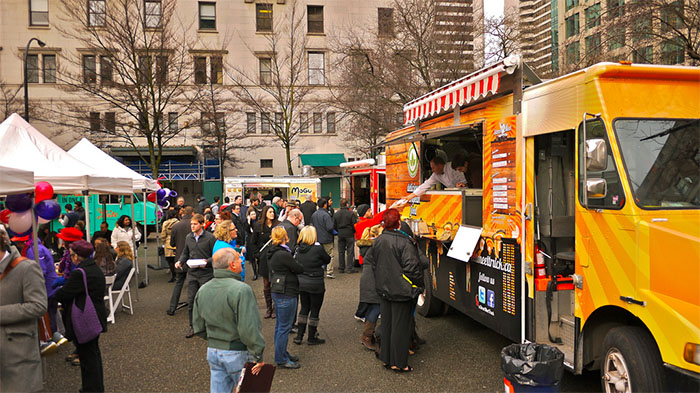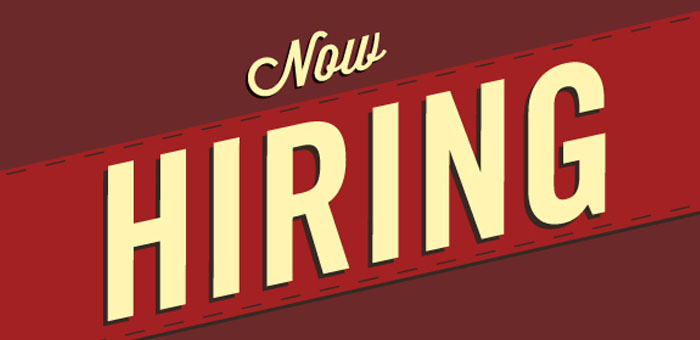Baking is an enjoyable pastime for most. But have you ever considered turning your passion into a profitable home bakery? Combining your passion for baking into a business can look appealing.
In you’re thinking about starting a home-based baking business this beginner’s guide will help you get started. I explain the license requirements, equipment you’ll need, and the step-by-step process you’ll need to get started.
Page Contents
- Know the Cottage Food Laws in Your Area
- Do You Need A License To Operate A Home Bakery?
- Determine Your Baking Specialty & Menu
- Set Prices and Understanding Cost
- What Equipment & Supplies Do You Need?
- How Much Will it Cost to Open a Home Bakery?
- Mistakes to Avoid when Starting a Home Bakery
- How to Promote a Home Bakery and Find Customers
- Is it Profitable to Open a Home Bakery?
Know the Cottage Food Laws in Your Area
The first step to open a home bakery is getting familiar with the cottage food laws in your area. Cottage Food is defined as food that is prepared in an environment that is recognized as low-risk for causing food related injuries and illnesses. This is food made in homes that’s also non-perishable meaning the food doesn’t need to be refrigerated.
Lucky for us, most baked goods fall under the acceptable list of Cottage Food items. While each state has different rules, in general you can safely bake and sell the following items to the public:
- Loaf breads
- Rolls
- Biscuits
- Birthday cakes (with certain exceptions)
- Cookies
- Jams and Jellies
- Pies (with certain exceptions)
- Doughnuts
Of course, not baked goods that are permitted to sell. For example, you can’t sell cheesecakes from home bakeries in many states. Cheesecakes are not allowed because they are perishable and need refrigeration.
As you probably already know, cheesecakes are made with dairy, which can spoil if they aren’t kept cold. In order to sell cheesecakes, you would need to have a commercial kitchen that’s equipped to properly store and make perishable foods. As a result, if you want to sell cheesecakes you’ll need to make them inside a commercial kitchen or bakery.
You Might Like: Do You Need an LLC for a Home-Based Bakery?
Baked goods generally are not allowed under cottage food laws include the following:
- Any baked good that contains meat or poultry.
- Any baked good that contains dairy products that require refrigeration, such as cheesecake or cream cheese frosting.
- Any baked good that contains raw eggs, such as cookie dough or batter.
- Any baked good that contains uncooked flour, such as pie crust or biscuits.
- Any baked good that contains sprouts, such as alfalfa sprouts or bean sprouts.
- Any baked good that is not shelf-stable, such as fresh fruit pies or cakes.
You may still be able to sell these but you’ll need to have this checked with your local health department.

Cupcakes good enough to eat.
Cottage food laws also require you to label your baked goods with the necessary information such as the following:
-
- Name and address of your home bakery
- Name of the item
- The ingredients used
- Allergen information
- Weight or volume of product
- A statement saying “Made in a Cottage Food Operation that is not Subject to Routine Government Food Safety Inspection.”
Keep in mind that each state has their own cottage food law so it’s always best to check with your local department for any specific rule before you start your home bakery business.
Do You Need A License To Operate A Home Bakery?
Here are some licenses you may need to legally operate a home bakery. Many retail bakeries operate as an LLC or limited-liability company. Here are other licenses that are often required.
Food Safety Certification
A food safety certification teaches you how to prevent foodborne illness by following safe food handling practices. These concepts are valuable to understand even if you aren’t required.
Business Registration
Depending on your state, they might require you to register your business. You can choose to register this as a sole proprietorship if you are the sole owner of your bakery or if you have a partner you can register this as a partnership.
- A business license. This license is issued by the city or county where you will be operating your business.
- A food handler’s permit. This permit is issued by the state and certifies that you have completed a food safety training course.
- A cottage food permit. This permit allows you to sell certain non-hazardous foods from your home kitchen.
- A health inspection. Your home kitchen will need to be inspected by the health department before you can start selling food.
Be sure to contact your local health department to see if there’s anything else you need to get a license before operating. You can also check this list to find the Cottage Food requirements specific to your state.
Determine Your Baking Specialty & Menu
On to the fun part of your bakery business: creating the menu. But before you get carried away, here are a few pieces of advice when it comes to starting a home based baking business.
Keep it Simple
It can be tempting to offer a dozen or more baked goods for sale. While this approach can be tempting, experts recommend that you should only sell 2 to 3 products in the early days. This allows you to develop a specialty.
Vlogger Wilson K Lee suggests keeping your bakery menu small at first to help simplify operations. “We don’t want to buy 10 different ingredients just to make 10 different flavors when we’re only selling one item.” Lee says. Lee also adds, “We want to simplify the process and we want to make this as easy as possible for us to grow a solid brand before we get into the complicated things.”
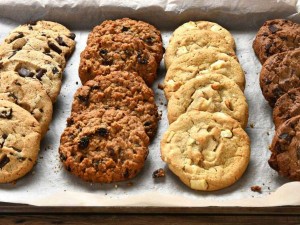
Cookies that sell like hot cakes.
You also need to take into consideration the fact that in the early days, you’ll probably be only person baking. And the reality is there’s only so much one person can bake each day within hiring. It’s easy to imagine baking cakes, pies, cookies, pretzels, and loaves of bread all by yourself. But it will be almost impossible to keep this up longterm.
Offering just 2 to 3 items at first is the best way to get started without over extending yourself. After you get the hang of things and start building a brand, you can slowly add more items.
Be Flexible
Another tip in creating your menu is to be flexible. That’s the fun part of having a home bakery. You can include seasonal items, change the menu every month, or introduce experimental items that could flop or become top sellers. This way, your customers can look forward to your menu from time to time or have something to come back to.
Make Use of Seasonal Items
If strawberries are in season, you can make strawberry cake. In the fall, apples become plentiful in many parts of the country. Make apple pie can make sense during this time of year. Making use of seasonal items means you’re using the freshest ingredients and can also help save you money on ingredient cost.
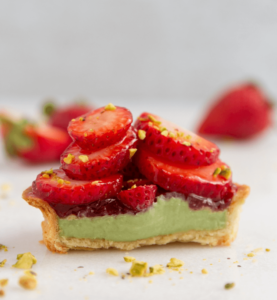
Look for seasonal items like strawberries to include in your pastry.
Develop a Specialty
There are numerous benefits to developing an expertise in a certain style of baking.
It helps you stand out from the competition. There are a lot of bakers out there. Finding a niche is a simple way to find a way to help your business stand out. Some ideas for niching down could be creating visually appealing frosting, wedding cakes, or scones. Find something you’re passionate about making and go all in.
It helps you improve your skills. When you focus on a particular type of baking, you get the opportunity to hone your skills. This leads to better quality baked goods and a more satisfied customer base.
It helps you save money. When you specialize in a particular type of baking, you can purchase ingredients and equipment in bulk, which saves you money. You’ll end up being less stressed out too since you’ll know exactly what ingredients to order.
Set Prices and Understanding Cost
After you figure out what to bake, you need to price the products right so you make a profit at the end of the year. If you blindly guess on prices, you might end up losing money on each transaction without knowing it.
To make sure you don’t lost money, you need to set your prices right. Here are the steps you need to take.
Document Ingredients
The most important thing in food costing is to make a list of all the ingredients you use and how much you’re using. If you need 500g flour, 1 teaspoon salt, 2 cups sugar, 1 stick of butter to make cupcakes, all these things should be written down. If you have a recipe book that lists the ingredients, you’ve already completed the first step. Now all you need to do is find out how much everything costs.
Write Down The Price and Break It Down
The next step is to write down the price of every ingredient and piece of equipment you’ll need to buy. Many of these items don’t cost much, but it all adds up.
For example, let’s say you bought 1 kilogram of flour and it cost to $1.60. Your recipe only calls for half of it which is 500 g. All you have to do is just divide $1.60 by 2. So your expensive for 500 g of flour would be $0.80.
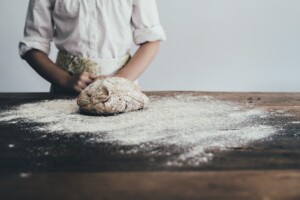
Ready to make some dough?
For other measurements, you’ll have to convert these to get the exact portion. For instance, you bought 475 ml of vegetable oil for $3. If your recipe only required 1 tablespoon you would need to convert 475 ml to tablespoon which is 32.12 tablespoons. And $3 divided by 32.12 gives you $0.093 per tablespoon of vegetable oil.
Make sure to document each unit of measurement of the item you bought. Don’t worry about being totally perfect with these estimates. If you’re able to get a close estimate of ingredient cost that is sufficient and better than most home bakers.
Include Other Costs
Ingredients aren’t the only thing to take note of. You should also include the cost of your packaging materials and labor cost. Remember, you’re not working for free. Even if you’re doing everything on your own right now, you want to understand how much it would cost to pay a baker to do the work longterm.
Understanding the costing of every single item will inform you if you’re charging enough to turn a profit.
What Equipment & Supplies Do You Need?
Your equipment and supplies will depend on the type of pastries you plan to make. Here are some of the basic pieces of equipment most home bakers use.
Oven and Oven Thermometer
An oven is a given when it comes to setting up a home bakery business. How else would you bake? The ideal starter oven for a home bakery business a safe option is a 81 litre oven. Once orders start coming in more regularly and you’ve saved enough, you can upgrade to a bigger one with more bells and whistles.
You’ll also want to get an oven thermometer so you can get the internal temperature of your oven ensuring a good baking time and result.
Mixers and Whisks
Some say you don’t need a stand mixer to bake goodies and that manual whisking does the trick. While this may be true on a small scale, you need to remember you’re running a business now. So yes, get that mixer to save time and effort. You can also get a handheld electric whisk if you’re not ready for a stand mixer at this time.
Mixing Bowls, Spatula, and Measuring Cups and Spoons
A lot of recipes will call for ingredients with exact measurements such as 1 tablespoon of vanilla or 1 cup of all-purpose cream. So get yourself some measuring cups and spoons.
In addition, you’ll want to get a lot of mixing bowls of different sizes. Stainless steel is ideal. Rubber spatulas are also needed to scrape off all your batter from the bowls and cups. You don’t want anything to go to waste. If you’re baking cakes, you’ll need an offset spatula to be able to evenly spread cream between layers or spread icing all around.

Start your bakery at home.
Pans and Trays
You’ll need trays and baking pans of different sizes for various baked goods. Depending on what you decide to produce there are cake pans that come in different shapes such as round and rectangle. You’ll also need cupcake trays and molds. Loaves also need pans to form unless you’re into making round ones then just forming them and placing them on a silicone mat will do.
Silicone Mat
Silicone mats are a must when you bake meringue, cookies, breads, and many more on a tray. You can still bake your usual pastries without these by spreading oil, butter, or lard. But silicone mats help when you’re running a home bakery business since this is convenient for you and it makes cleaning up easier. These non-stick mats are also helpful when you remove your baked goods because they easily lift up from the mats and they don’t leave behind a mess.
Weighing Scale
You’re probably wondering why you need a weighing scale when you already have measuring cups and spoons. You’ll need one because it helps with consistency. Measuring cups and spoons can help you but if you bake buns, but how will you measure each bun with a cup or spoon? Weighing dough can help you make precise portions so you understand product costs in greater detail.
You Might Like: 202+ Smart Cookie Company Marketing Slogans that Increase Sales
Cooling Racks
You’ll need cooling racks to help your baked pastries, breads, and cakes cool down faster rather than just leave them on the baking trays. You need these to cool down a cake to cookies before adding icing. Cooling racks are useful and you’ll want to buy a few for your home bakery business.
Bread Tray Rack
A bread tray rack is a movable rack where you can store several baking trays. Though it’s not entirely a need, it can be useful and it’s considered a space saver. You’ll want to keep things neat and tidy especially if your home bakery occupies a small area. A bread tray rack can help you organize your baked goods that are fresh out of the oven in just one area. You’ll also have more working space that’s not occupied by so many pastries.
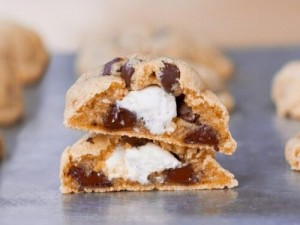
What is your specialty?
Rotating Cake Stand
Frosting a cake can be very difficult without a rotating cake stand so it is recommended to invest in one. Rotating cake stands can make decorating pastries more convenient since you don’t have to move around to get a better angle of the cake.
Pastry Bags and Tips
A pastry bag gives offers more precision and control when decorating cakes, cookies, and other pastries. You’ll be able to make all sorts of different shapes and designs.
How Much Will it Cost to Open a Home Bakery?
The average cost to open a bakery is between $10,000 and $50,000. But you may not need to invest this much if you already own equipment like a rolling pin or a mixer. If you already own some of the required equipment, the startup cost will be significantly lower.
To save money on startup costs, you can starting by purchasing supplies in bulk and making everything yourself to cut out labor costs. You can also invest in lower-cost equipment at first and then make upgrades after you’ve earned money from the baking business.
Mistakes to Avoid when Starting a Home Bakery
Here are a few mistakes to avoid when you start a home bakery so you know what to look out for.
Not Understanding the Cost of Baked Goods
When you transition from home baker to business owner, one important step in the transition is understanding the cost to produce baked goods.
Understanding the cost of goods sold (COGS) is important for any bakery owner, as it is a key factor in determining profitability. COGS is the direct cost of producing the goods that a bakery sells and it includes the cost of ingredients, labor, and other variable costs. By understanding COGS, bakery owners can make informed decisions about pricing, production, and inventory management.
Hiring More Staff
Remember, you are a small business and a home bakery. There’s no need to hire so many people to work for you. Overstaffing can lead to increased costs and decreased productivity. So in the early days try to stay scrappy and do all the work yourself. If you keep things small at first, you’ll have less overhead and the operations will be simpler.
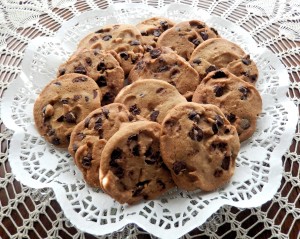
Chocolate chip cookies.
Too Many Items On The Menu
As mentioned above, stick to 2 to 3 specialty items and then gradually add more products as gain experience. Operating a home bakery is a ton of work. You don’t want to overcomplicate things by adding too many items.
Not Keeping Track of Expenses
Keeping track of your expenses will help you understand how much money you need to make and to save. When some home bakers get started, they don’t realize they might actually be losing money or essentially baking for free when you consider ingredient cost, packaging, and labor.
Here are the primary expenses for a home bakery. Everyones expenses will be different depending on the baked goods being produced.
- Ingredients. The cost of ingredients, such as flour, sugar, butter, eggs, and chocolate all add up. Write down the cost of each ingredient you use.
- Equipment. You will need a variety of equipment to bake, such as an oven, mixer, spoons, stand mixer, and baking sheets as an example. Write down the cost of each piece of equipment.
- Supplies. You will also need a variety of supplies, such as parchment paper, baking cups, and frosting bags.
- Marketing. You will need to market your business to potential customers. This can be done through online advertising, social media, and word-of-mouth. Much of this can be done for free, but it’s still worth noting.
- Licensing and permits. You may need to obtain a business license and other permits from your local government.
- Insurance. You should consider purchasing insurance to protect your business from liability claims.
- Taxes. You will need to pay taxes on your business income even if you’re operating out of your house.
Avoiding these mistakes can help you grow your bakery into a successful one.
How to Promote a Home Bakery and Find Customers
At this point you’re ready to sell baked goods. The next problem you will encounter is how to find customers to pay for your baked goods. Here are some proven ways to market a home bakery.
Social Media Ads
According to some estimates, 28% of all internet users discovers new products to buy because of social media ads. Social media is a tool you can use to market your goods for free. I suggest taking pictures of the baked goods you make and sharing them on social media with a brief description. Let friends and followers know they can purchase your baked goods. Keep things simple and see what type of a response you get.
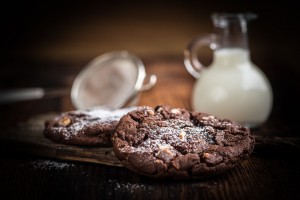
Milk and cookies.
Offer Free Samples
Free samples are another timeless way to generate interest in a consumable product. Even the biggest publicly traded companies like Costco use free samples to help customers discover new food products. You can use the same approach to entice customers to taste and then purchase your goods.
Attend Fairs and Other Live Events
Check out your local fair and inquire if you can join in. Joining a fair can get you to garner more customers. You can hand out your business card, hang a sign where they can follow you on social media, and strike up a conversation with them so you can do a little sales talk. Attending fairs also lets you spot your competition and see what the trends in the bread industry are.
Is it Profitable to Open a Home Bakery?
If you’re passionate about baking and are willing to put in the work then it’s possible to start a profitable home-based bakery. But it’s also important to be realistic about expectations in the early days. This is not the business model that will make you a millionaire overnight.
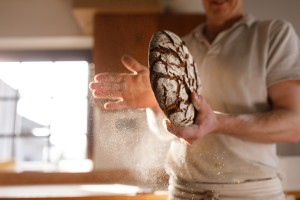
What kind of a baker are you?
According to a survey we conducted with responses from 283 home bakers, here are a few of the responses that were submitted about monthly income.
- One baker reported making $2,000 per month selling cookies and cupcakes at a local farmers market.
- Another baker reported selling $5,000 on average per month baking gluten-free bread to friends and family members.
- A third baker started selling cookies to coworkers. After a few years working part-time in evenings and weekends on the business, the baker started generating a consistent $10,000+ in monthly revenue and decided to open their own commercial bakery.
Although the responses above are inspiring, roughly 32% or 90 out of the 283 survey responses said they made less than $500 per month selling baked goods. The reality is most home bakers don’t make much money from their efforts.
Keep in mind that revenue generated from a home bakery depends on your personal situation, skills, and motivation. Are you selling baked goods that are in demand? How many hours are per week are you committed to operating the business? What are you charging? Are you good at marketing?
What’s great about being the boss of your home bakery business is that you get to call the shots and do something you love doing anyway. But don’t expect opening a successful home bakery to be a cake walk.


